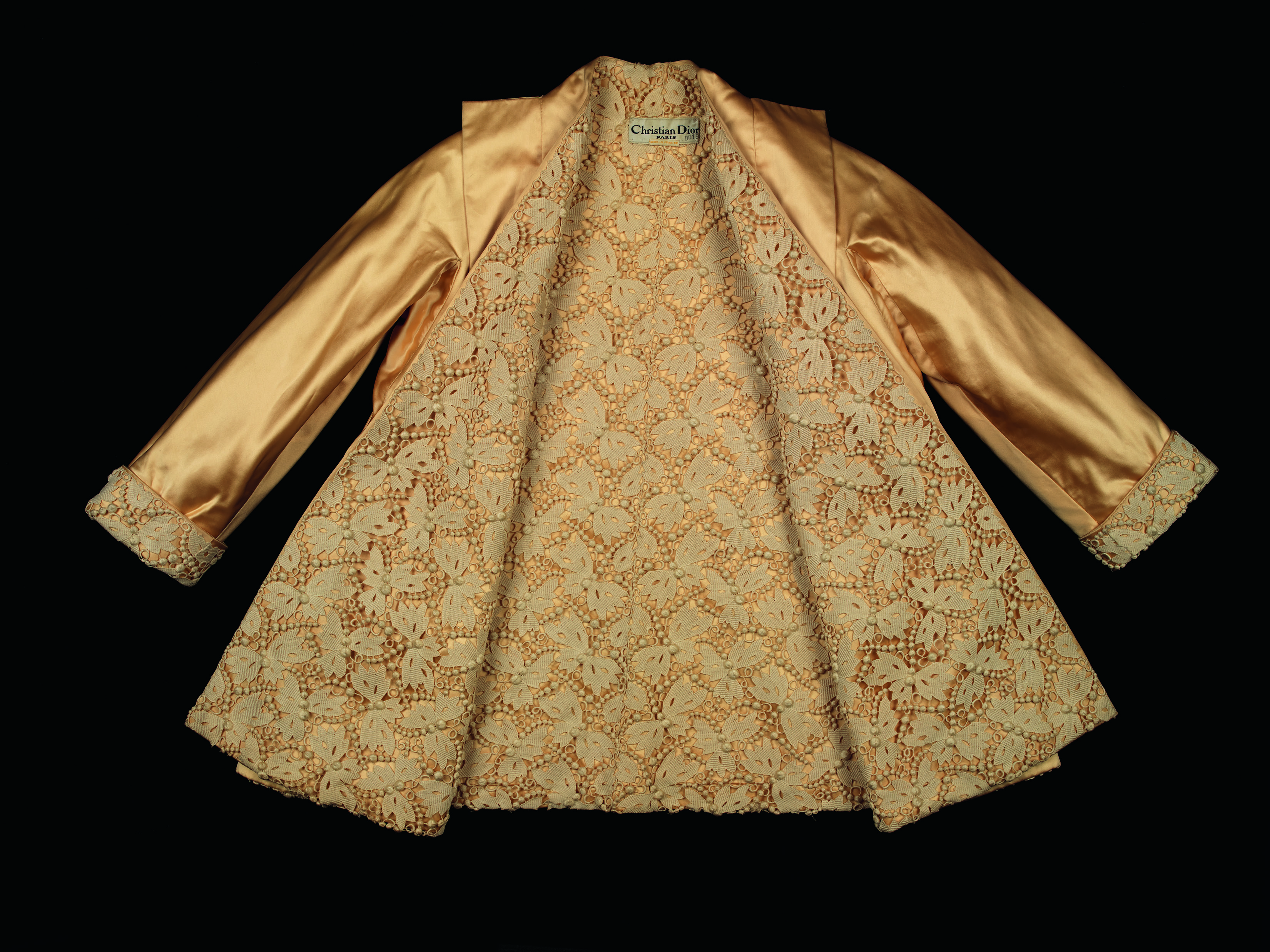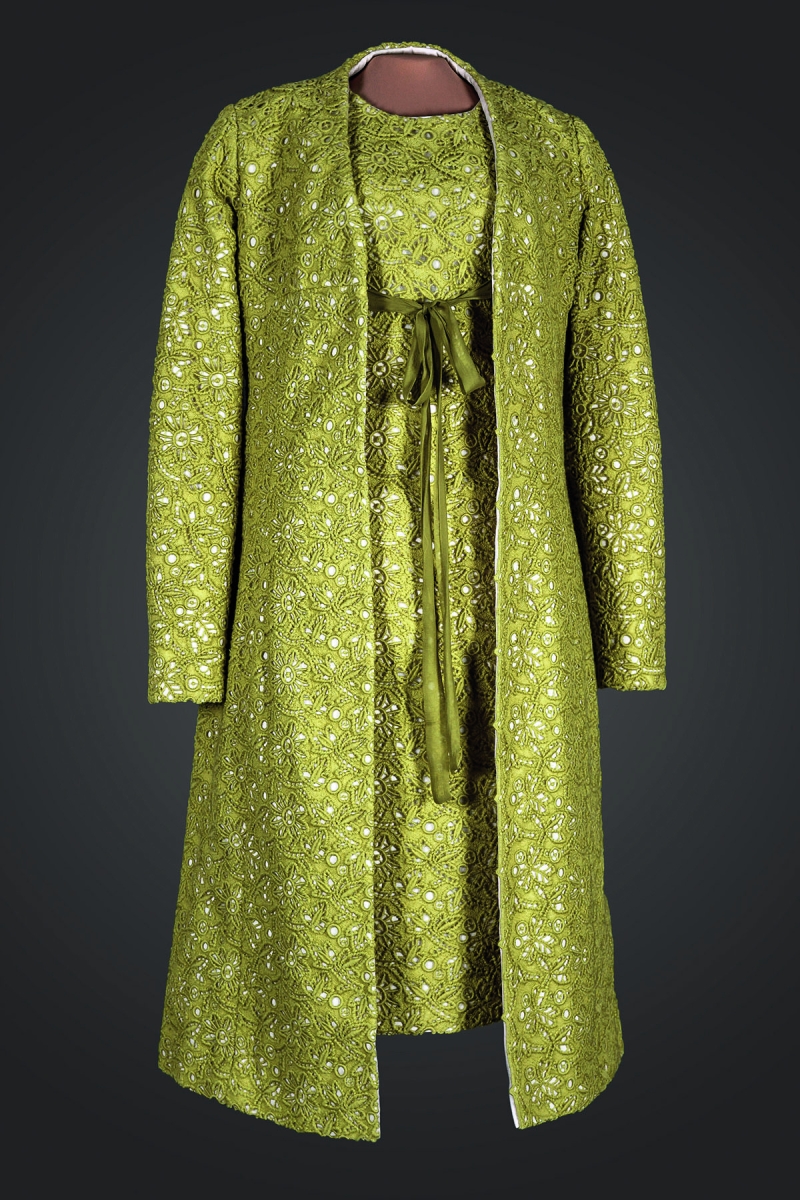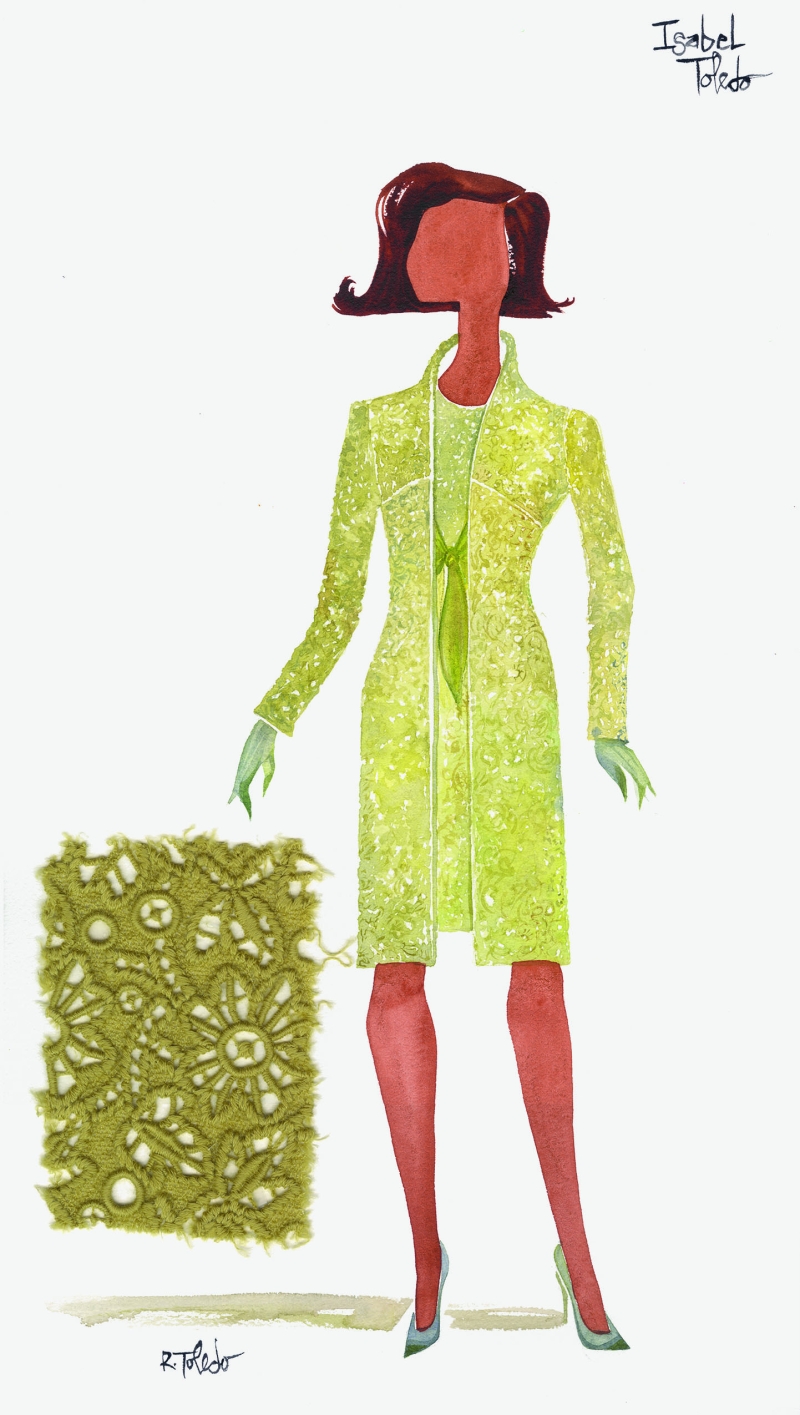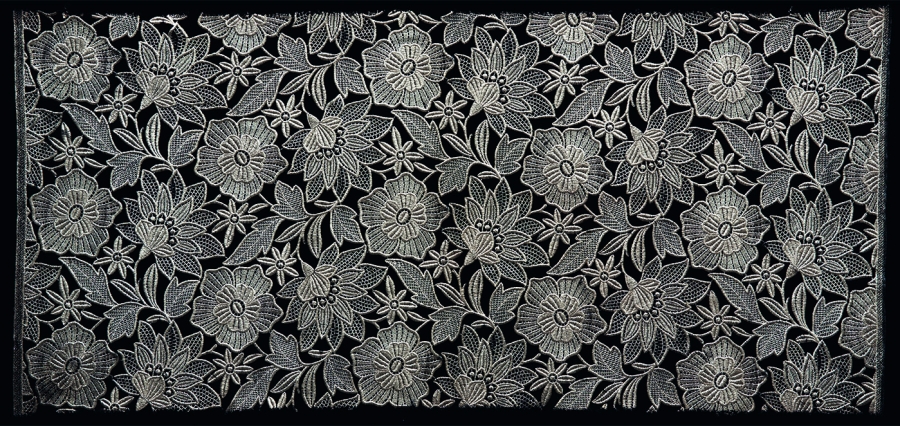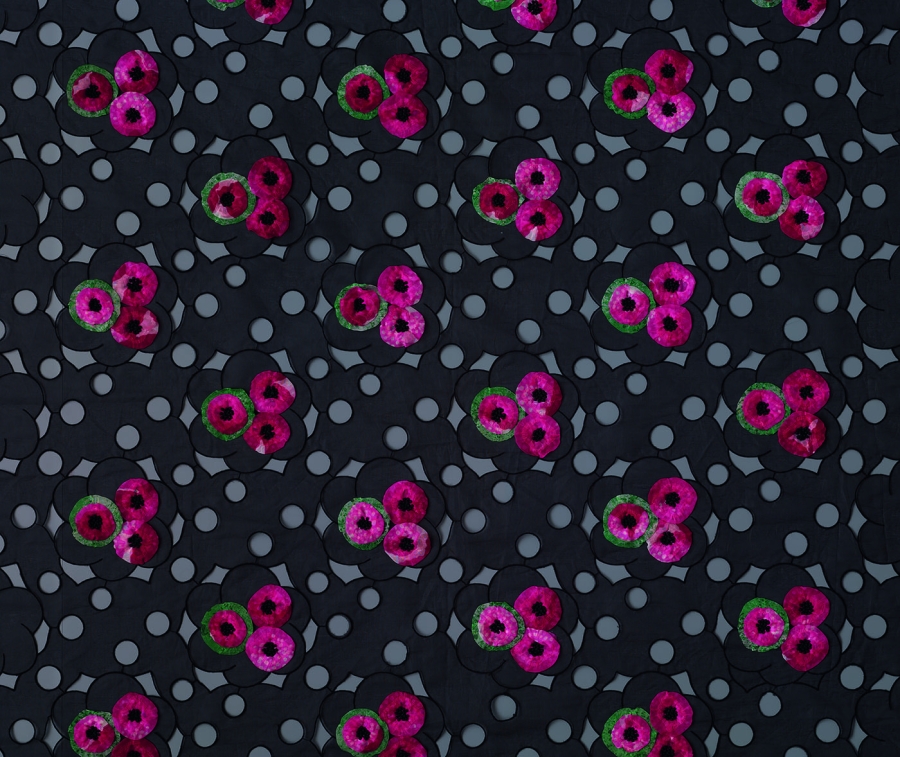Postwar Fashion and Chemical Lace
During the second half of the twentieth century, St. Gallen–based textile companies aligned themselves with the resurgent haute couture industry as well as high-end prêt-à-porter (ready-to-wear). Designers including Christian Dior, Hubert de Givenchy, Yves Saint Laurent, Jean Paul Gaultier, Thierry Mugler, Claude Montana, and Gianni Versace incorporated chemical lace into their garments, either as trimming or as the primary material of an ensemble. The St. Gallen chemical lace industry featured prominently in the American and French fashion press during this period, with Women’s Wear Daily and Vogue regularly announcing new products and illustrating their use in the latest silhouettes.

Zurich and St. Gallen, Switzerland
ca. 1963–67
Cotton, silk, and nylon
Textilmuseum St. Gallen, Gift of Schweizerisches Baumwoll Institut/Textil und Mode Centrum Zürich, 1983, 41100
Photo: Michael Rast
Click Image to Explore Details
Click Image to Explore Details
Made in the atelier tailleur by Paul Forster Willi & Co. (now Forster Rohner AG; 1904– ), textile manufacturer
Paris and St. Gallen, Switzerland
Spring/Summer 1949
Silk satin lined in heavy cotton guipure lace
Royal Ontario Museum, Toronto, Gift of Mrs. John David Eaton, 956.153.9
St. Gallen has maintained a reputation for high-quality fabrics and continues to focus on an international clientele. Local firms Forster Rohner and Jakob Schlaepfer, both established in 1904, and Bischoff Textil, founded in 1927, market chemical lace and other textiles to couturiers. In addition to releasing seasonal collections generated by their design teams, these companies also collaborate directly with fashion houses including Prada, Akris, and Oscar de la Renta to create custom products. The chemical lace manufacturing process creates a versatile textile that comes in a wide variety of forms: some designers prefer large-scale or geometric designs that incorporate innovative materials, while others favor designs that resemble antique handmade bobbin and needle laces.
Forster Rohner AG (1904– ), textile manufacturer
United States and St. Gallen, Switzerland
2008
Felted wool lace, silk radzimir, and silk netting
Courtesy Barack Obama Presidential Library, FL2011.1a–b

Click Image to View Slideshow
Forster Rohner AG (1904– ), textile manufacturer
United States and St. Gallen, Switzerland
2008
Felted wool lace, silk radzimir, and silk netting
Courtesy Barack Obama Presidential Library, FL2011.1a–b
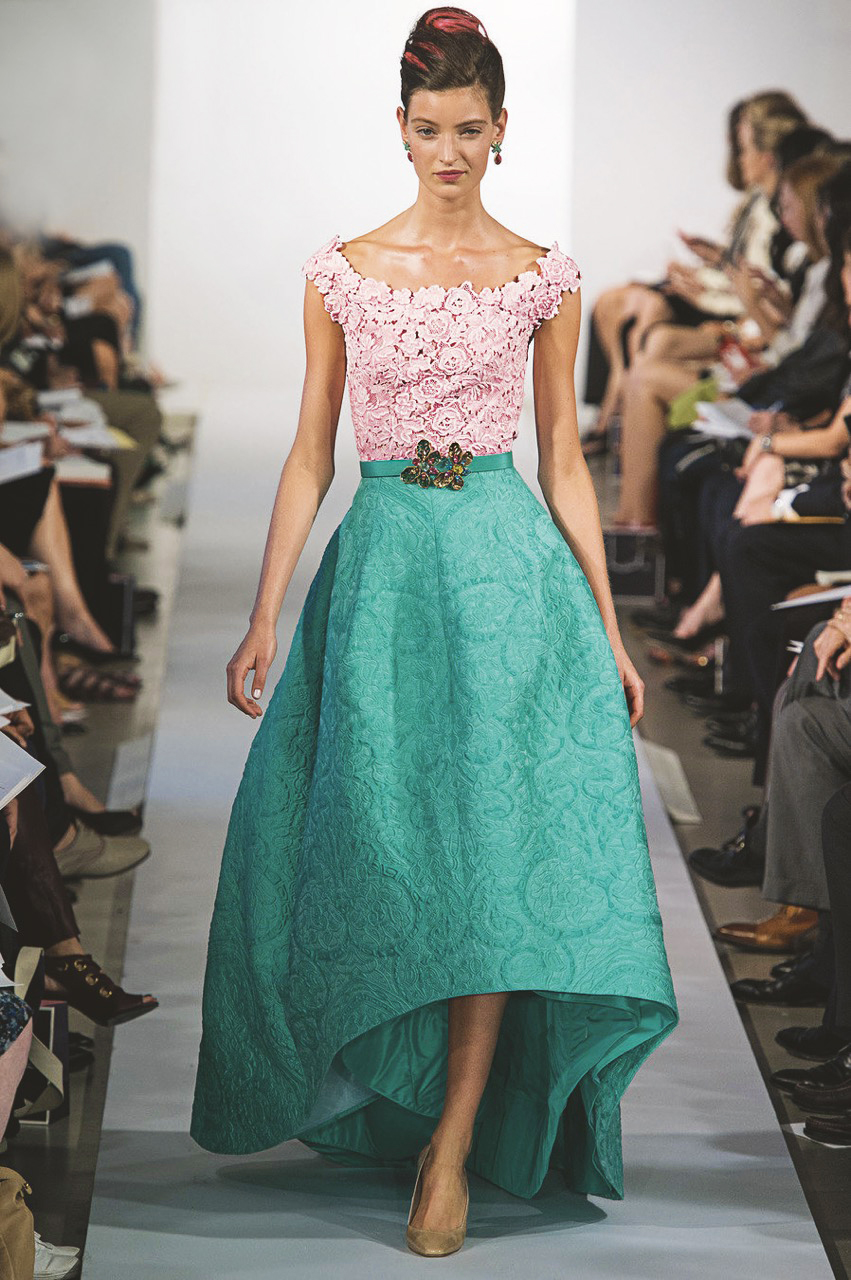
Bischoff Textil AG (1927– ), textile manufacturer
United States and St. Gallen, Switzerland
Spring 2013
Synthetic fiber and cloque
Oscar de la Renta Archive
Bischoff Textil AG (1927– ), textile manufacturer
United States and St. Gallen, Switzerland
Spring 2013
Synthetic fiber and cloque
Oscar de la Renta Archive
Innovation and Experimentation in Contemporary Lace
Since the late twentieth century, in response to a constant demand for novel lace and embroidery, St. Gallen–based manufacturers have devised new production techniques that often use unexpected materials including silicone, feathers, and silver foil. Among these firms is Jakob Schlaepfer, known for its experimental approach to creating textiles using chemical lace techniques. An additional important facet of the company’s output includes the “Hypertube” guipure lace crafted from silicone that was first featured in 2017 by designer Yang Li and has since been used by Comme des Garçons and Iris van Herpen.
St. Gallen, Switzerland
1999
Synthetic fiber and silver plating
Collection Martin Leuthold
Photo: Michael Rast
St. Gallen, Switzerland
1999
Synthetic fiber and silver plating
Collection Martin Leuthold
Photo: Michael Rast
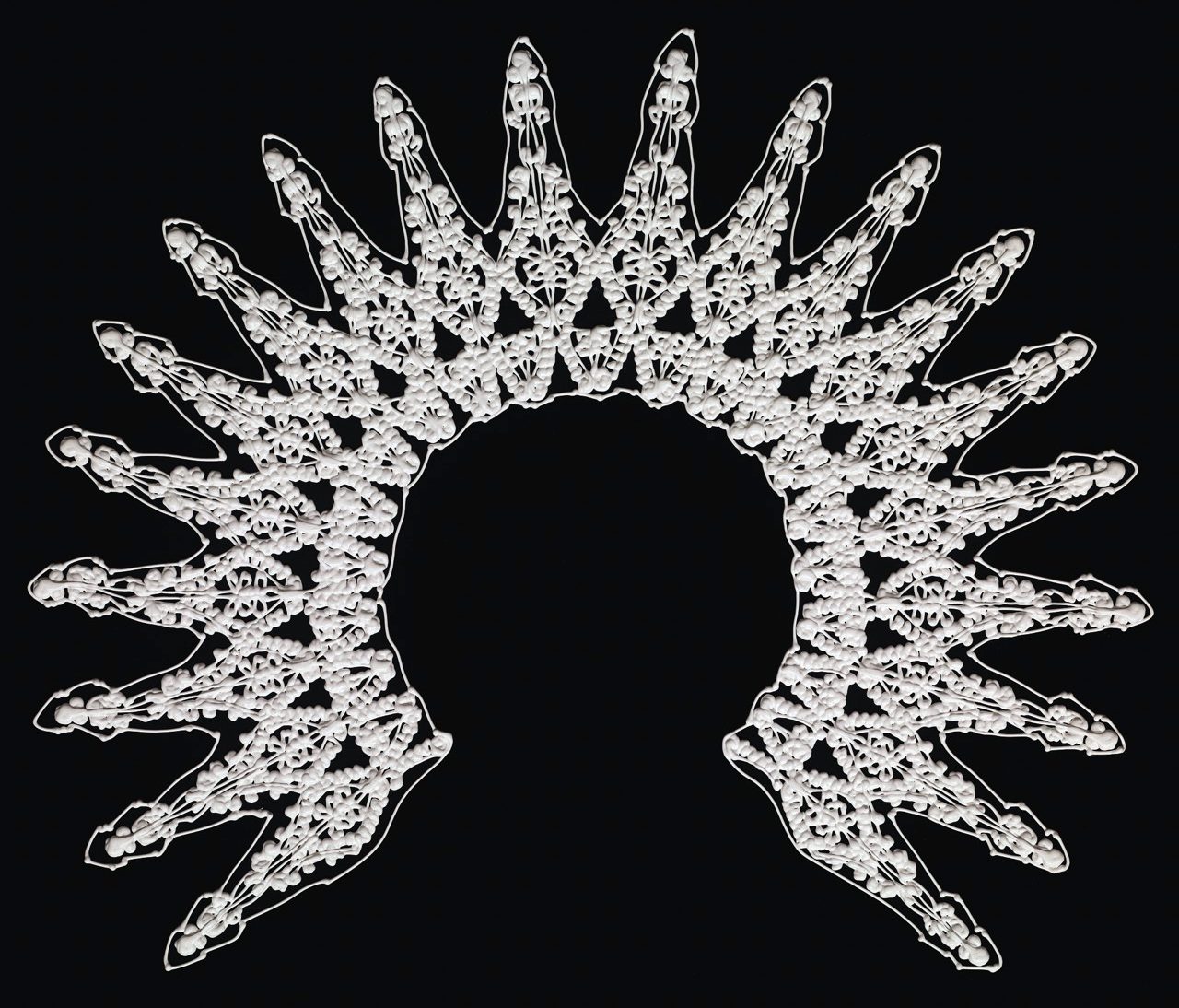
St. Gallen, Switzerland
ca. 2021
Silicone
Private collection
Photo: Michael Rast
Like the St. Gallen–based manufacturers of the late nineteenth and early twentieth centuries, Schlaepfer and other companies draw on the region’s rich textile history and look to objects such as those preserved in the Textilmuseum St. Gallen for inspiration. Swiss textile designer Martin Leuthold, who was creative director of Schlaepfer for more than forty years, notes the vast opportunities for future development of this enduring textile: “Handmade lace was produced from the sixteenth to the early twentieth century, but machine-made has only been around for about 150 years. We are still pulling from the roots of lace, from more than 550 years ago, and we are not finished. There is much more innovation to come. Lace will be an inspiration forever.”

